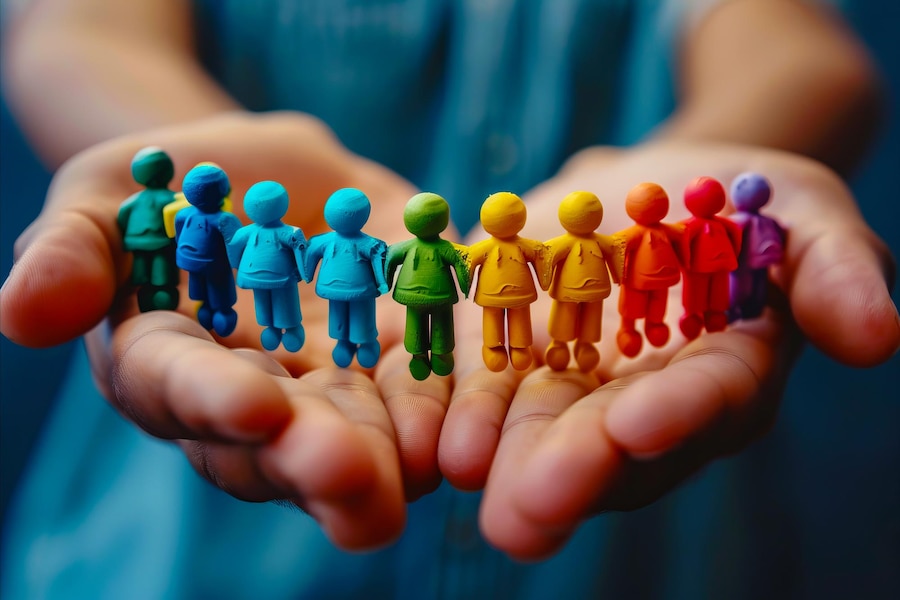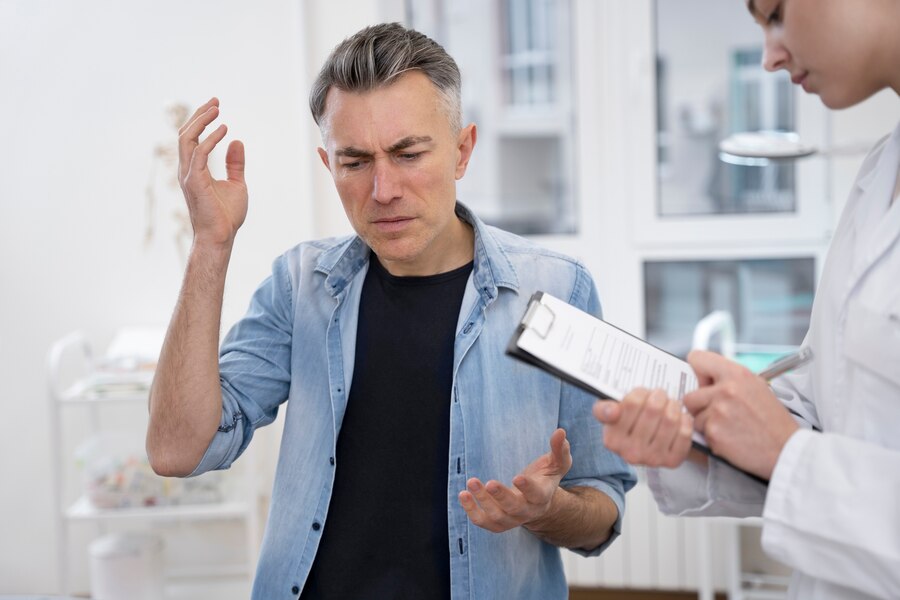All American Detox offers specialized residential addiction treatment services in Los Angeles, California, designed to provide comprehensive support for individuals seeking recovery from substance abuse. Our residential treatment program combines medical expertise with compassionate care to address the physical, emotional, and psychological aspects of addiction. This guide provides an overview of the residential treatment services we offer, including detoxification, personalized therapy plans, and holistic approaches to support lasting recovery.
Contact Us for Detox Services
Residential Treatment Overview
Residential addiction treatment at All American Detox provides a structured and supportive environment for individuals seeking to overcome substance abuse. Our program is designed to immerse clients in a therapeutic setting where they receive 24/7 care and support from a dedicated team of professionals. This immersive approach allows individuals to focus entirely on their recovery without the distractions of daily life. Our residential treatment program includes a variety of therapeutic modalities and support services to address the multifaceted nature of addiction and promote long-term recovery.
Our residential facility is equipped with comfortable accommodations and amenities to create a safe and nurturing environment. Clients benefit from a structured daily schedule that includes therapy sessions, educational workshops, and recreational activities designed to support physical and emotional healing. By providing a comprehensive treatment experience, we help individuals build a solid foundation for their recovery journey.
Detoxification Services
Detoxification is a crucial first step in the recovery process, involving the removal of harmful substances from the body under medical supervision. At All American Detox, our detoxification services are tailored to meet the unique needs of each individual, ensuring a safe and comfortable experience. Our medical team closely monitors clients throughout the detox process to manage withdrawal symptoms and provide necessary medical interventions.
We employ evidence-based protocols and utilize advanced medical treatments to support the detoxification process. This approach helps minimize discomfort and ensures that clients receive the appropriate care for their specific situation. By addressing the physical aspects of addiction, we prepare individuals for the next stages of their recovery journey.
Personalized Detox Plans
At All American Detox, we understand that each individual’s journey to recovery is unique. Our personalized detox plans are designed to address the specific needs and challenges of each client. We conduct comprehensive assessments to determine the most effective detoxification approach, taking into account factors such as substance use history, medical conditions, and individual preferences.
Our personalized plans include tailored detox protocols and ongoing support to ensure a smooth transition through the detox process. By customizing our approach, we provide clients with a treatment experience that aligns with their needs and sets the stage for successful long-term recovery.
Individual Therapy
Individual therapy is a core component of our residential addiction treatment program, offering clients the opportunity to work one-on-one with a licensed therapist. This personalized therapy allows clients to explore the underlying causes of their addiction, develop coping strategies, and address any co-occurring mental health issues.
Our skilled therapists use evidence-based techniques, such as cognitive-behavioral therapy (CBT) and motivational interviewing, to support clients in achieving their recovery goals. Individual therapy sessions are designed to provide a safe and confidential space for clients to express their feelings, set goals, and work through challenges in their recovery journey.
Group Therapy
Group therapy plays a vital role in our residential treatment program, providing clients with the opportunity to connect with others who are experiencing similar challenges. Group sessions foster a sense of community and mutual support, allowing individuals to share their experiences, gain insights, and build interpersonal skills.
Facilitated by experienced therapists, group therapy sessions focus on various topics, including coping strategies, relapse prevention, and personal growth. The collaborative nature of group therapy helps clients develop a supportive network and reinforces the skills learned in individual therapy.
Holistic Therapies
Holistic therapies complement traditional treatment approaches by addressing the mind, body, and spirit. At All American Detox, we incorporate a range of holistic therapies to support overall well-being and enhance the recovery process. These therapies include practices such as yoga, meditation, acupuncture, and art therapy.
Holistic therapies promote relaxation, reduce stress, and help clients develop a deeper connection with themselves. By integrating these approaches into our treatment program, we provide a well-rounded and comprehensive experience that supports clients’ physical, emotional, and spiritual health.

Family Involvement
Family involvement is a crucial aspect of the recovery process, as it helps to repair relationships and build a strong support system. At All American Detox, we encourage and facilitate family participation through educational sessions, family therapy, and support groups.
Family therapy sessions provide a platform for open communication, addressing any issues related to addiction and its impact on family dynamics. By involving family members in the treatment process, we help create a supportive and understanding environment that fosters healing and long-term recovery.
Aftercare Planning
Aftercare planning is an essential component of our residential treatment program, ensuring that clients have a structured plan for continued support after leaving our facility. We work with clients to develop personalized aftercare plans that include ongoing therapy, support groups, and other resources to maintain recovery.
Our aftercare services help clients navigate the transition back to their daily lives, providing tools and strategies to prevent relapse and sustain progress. By offering comprehensive aftercare support, we help clients build a strong foundation for long-term success in their recovery journey.
Additional Services
Life Skills Training
Life skills training is an important part of our residential treatment program, aimed at enhancing clients’ independence and self-sufficiency. We offer practical training in areas such as financial management, job readiness, and daily living skills. These skills are essential for maintaining a stable and fulfilling life post-recovery.
By equipping clients with the tools and knowledge needed for everyday challenges, life skills training helps them build confidence and resilience. This preparation supports clients in achieving their personal goals and integrating successfully into their communities.
Nutritional Support
Nutritional support is a key component of our holistic approach to addiction treatment. We provide guidance on healthy eating and nutrition to support overall health and recovery. Proper nutrition plays a significant role in physical and mental well-being, aiding in the healing process and improving energy levels.
Our team of nutritionists works with clients to develop balanced meal plans that meet their dietary needs and support their recovery goals. By promoting healthy eating habits, we contribute to clients’ overall health and enhance their ability to maintain sobriety.
Find Residential Addiction Treatment at All American Detox
All American Detox is committed to providing comprehensive residential addiction treatment in Los Angeles, California. Our program combines medical expertise with a range of therapeutic approaches to support individuals throughout their recovery journey. From personalized detox plans and individual therapy to holistic therapies and family involvement, we offer a well-rounded treatment experience that addresses all aspects of addiction. Our goal is to help clients achieve lasting recovery and build a foundation for a healthier, more fulfilling life. With a focus on personalized care and holistic support, All American Detox is dedicated to guiding individuals towards successful and sustained recovery. Contact us today to learn more about our programs and start your journey towards a healthier, addiction-free life.
FAQs
1. What is residential addiction treatment, and how does it differ from outpatient?
Answer: Residential addiction treatment provides 24/7 care in a structured environment, allowing for intensive therapy and medical supervision. It’s ideal for individuals struggling with severe addiction or requiring a supportive living environment.
2. What can I expect during residential addiction treatment in Los Angeles, California?
Answer: Expect a structured daily routine with medical monitoring, individual and group therapy, medication-assisted treatment (if needed), and opportunities for holistic healing. Our program focuses on addressing the underlying causes of addiction and building a strong foundation for recovery.
3. How long is a typical residential addiction treatment program?
Answer: The duration varies depending on individual needs and treatment goals. Our programs range from short-term to long-term options to accommodate different recovery journeys.
4. What are the benefits of residential addiction treatment in Los Angeles, California?
Answer: Residential treatment offers a distraction-free environment, 24/7 support, and access to specialized therapies. It increases your chances of long-term recovery by providing a comprehensive approach to addiction treatment.
5. Will insurance cover residential addiction treatment in Los Angeles, California?
Answer: Many insurance plans cover residential addiction treatment. All American Detox can assist in verifying your coverage and understanding your benefits.
6. What is the role of family in residential addiction treatment?
Answer: Family involvement is crucial. Our programs include family therapy and support groups to help loved ones understand addiction and provide support.
7. How can I prepare for residential addiction treatment?
Answer: Gather necessary documents, inform your employer or school about your absence, and create a support system. Our admissions team can guide you through the process.
8. What happens after completing residential addiction treatment in Los Angeles, California?
Answer: Our aftercare programs provide ongoing support, including outpatient therapy, support groups, and relapse prevention strategies. We help you transition smoothly back into your daily life.
9. What is the difference between residential and outpatient treatment?
Answer: Residential treatment provides a structured living environment with 24/7 care, while outpatient treatment allows you to live at home while attending therapy sessions. The best option depends on individual needs and circumstances.
10. How can I find an affordable residential addiction treatment program in Los Angeles, California?
Answer: All American Detox offers financial assistance options and works with insurance providers to make treatment accessible. We can help you explore payment plans and find the best fit for your budget.



















